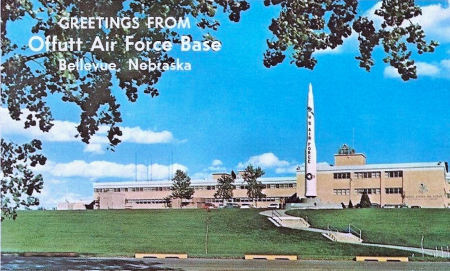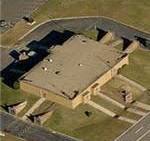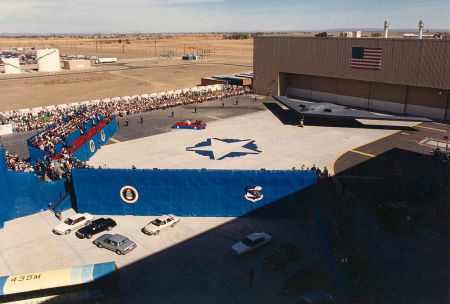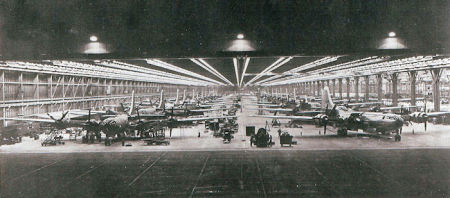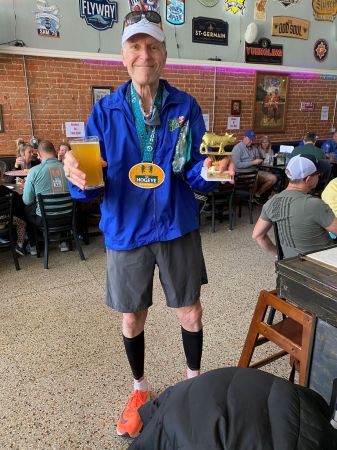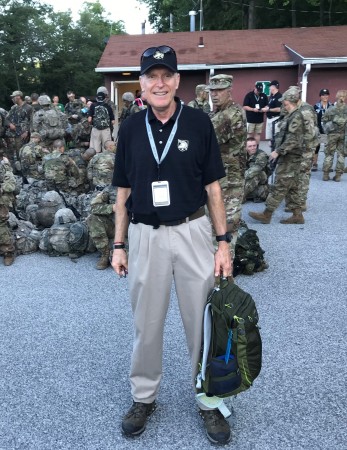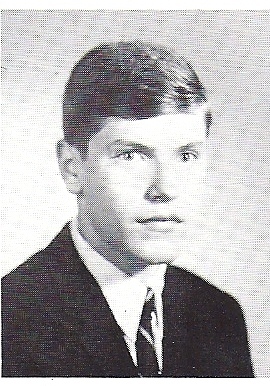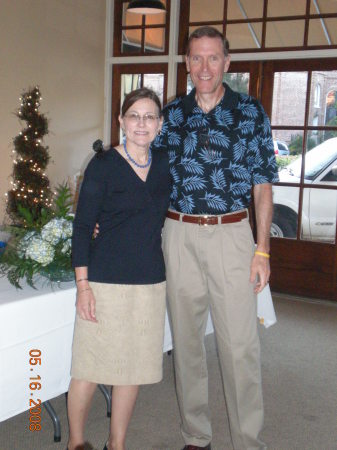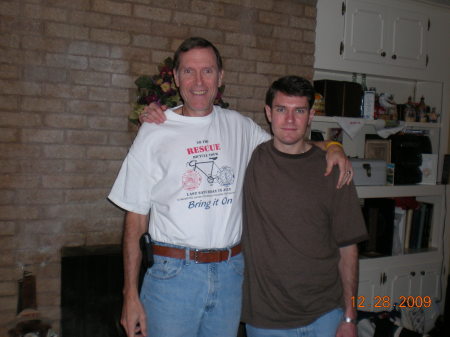John Zielinski:
CLASS OF 1969
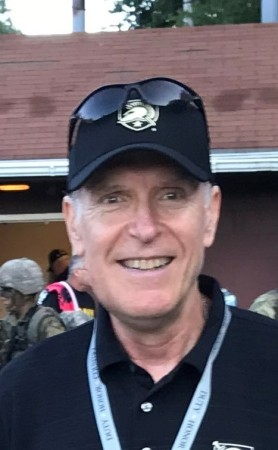
Baton Rouge High SchoolClass of 1969
Baton rouge, LA
Ramey SchoolClass of 1969
Ramey afb,
John's Story
Good news, bad news. The good news: for the first time in nearly a 2-decade Air Force career, I had my very own office. There were no windows allowed in our Sensitive Compartmented Information Facility or SCIF meaning there wasn’t much of a view but I did have my own personal 4 drawer safe. The bad news, from about 8am until 4pm, there seemed to always be someone in my office with an issue or I was sitting in a general’s office with a briefcase full of classified documents waiting to deliver what would generally be bad news. I had 12 great people working for me and could give work to another 100 folks through matrix staff arrangements. My folks would usually travel to program meetings Tuesday through Thursday leaving Monday afternoon and coming back Friday. All of us were on the road a lot. I usually spent an entire week on the West Coast every third week. Kind of odd being road warriors charged with fielding an airplane.
It was a little surreal being back at Offutt AFB located south of Omaha, NE. My family lived in Omaha while I was in 2nd though 7th grades. My Dad ran the Strategic Air Command Headquarters (SAC HQ) printing plant which churned out mountains of classified and unclassified paper. We used to go to the swimming pool right across the road from the SAC HQ building with its iconic Minuteman missile sitting in front (see Gallery). I always wondered what was going on in there and in July 1990, I had my very own hall pass to see what was behind the curtain just like Dorothy and gang going to see the Wizard of Oz. Kind of like going from the black & white TV of childhood to a colorated version as an adult. I will always remember seeing Invasion of the Body Snatchers in B&W in our living room with all of my family and then checking every nook and cranny when sent to bed that night and not being able to sleep.
One of my first trips was to Whiteman AFB, MO which was just south of Knob Noster, MO. Whiteman had been selected as the Main Operating Base for the B-2 Spirit bomber in January 1987 changing its focus from being a missile base (hosting a Minuteman II wing of intercontinental ballistic missiles – ICBMs) to handling the Nation’s newest aircraft. The town name is connected with the prominent mound or knob (or knobs) that stand isolated on the prairie near the town which explains the front part though it’s a bit squishy where the 2nd part came from. The area around the town is very, very flat. I had some real flying history with Whiteman from the late 1970s.
In the late 1970s, the 2nd Bomb Wing at Barksdale AFB, LA deployed a B-52 and 3 or 4 KC-135s to sit satellite nuclear alert at Whiteman AFB. This was in addition to the 9 B-52 and 7-8 KC-135 alert sorties that were on nuclear alert back in Louisiana. We would report to the Barksdale flightline around 7am with all our required gear and manuals, climb on a C-135 transport aircraft and fly up to Whiteman. After we did the required “by the book” inventory and changeover with the outgoing crew, they would fly back to Barksdale leaving us for a very quiet week. We lived right by our B-52 and could run directly to it if there was a practice klaxon (had to get in trucks at Barksdale to get from the alert facility to the aircraft). We didn’t have to do any simulator training or be called into the briefing room to be a “rent a crowd” for some senior officer which happened frequently at Barksdale so there was a lot of card playing, TV watching and generally goofing off since the alert facility was designed as a traditional “mole hole.” The briefing room, dining hall and offices were above ground with all of the living quarters below ground – kind of like a big foxhole (see Gallery). The rest of the flightline was in pitiful shape. The ramp areas had lots of cracked concrete though the runaway was in OK shape. Hangars and buildings which supported flying operations showed extreme wear and tear with most military construction dollars going to support the missile wing’s needs.
One of my first trips to Whiteman in 1990 was to discuss the extensive planned Military Construction (MILCON) efforts just starting to get underway. The flightline ramp didn’t look much different from 1970s and the best new building was the headquarters building which was typical of the AF – make sure the bosses had good digs to work from. A shelter for the first operational aircraft was underway and phases included upgrading family housing and just about every other part of the base. The off-base breakfast spot in “downtown Knobnoster” was The Office. If you showed up late, you just had to say you were finishing things up at the Office. By the time the first real, usable B-2 showed up in December 1993, the base was transformed into an emerging AF showplace.
Over the next 6 years of meetings, there emerged several problems that kept getting worse no matter how long we talked about them. Meetings generally ran for 3 days (Tuesday to Thursday) and I was upgraded to the adult table. I was responsible for representing the “Using Community” though I merely had the unenviable task of carrying back updates on what promised capability the developers couldn’t deliver either on schedule or at all. The first was software. There was a chart in every session that showed the line of needed software programmers compared to how many were actually hired. The lines diverged and kept going in opposite directions every quarter. Competing for software programmers against Dreamworks, Lucasfilms and the gaming industry was an uneven fight from the git-go. Their salaries dwarfed ours. Plus, the required Top Secret clearance requirements meant doing a little marijuana or uppers in college was disqualifying behavior. The pool of straight-arrow software folks who wanted to work for less pay was pretty shallow and it constantly exerted pressure on our development and delivery schedule.
The second bottomless pit of delays was the flight test program. Since the B-2 was a fly-by-wire airplane with 4 independent computer systems chattering amongst themselves for how the airplane functioned, things had to be exactly right or there was no flying. Each new software “drop” that was put together to fix some anomalies discovered in flight test required “regression testing” or repeating things already tested instead of doing new activities. Boeing was to discover the importance of regression testing in the 737 Max. When you make changes to the airframe or sensors or software, you need a lot of testing to verify it’s going to work under many scenarios. Flight test aircraft have miles of additional wiring to record all the things that are happening while in the air and any failure of the testing computers/wiring were reasons not to fly. Repairs to the aircraft were time-consuming because of “cure” times for many of the materials that make it stealthy. Test event schedules had more red for cancellations than black for completions. Since many of the materials, tapes and sealants needed to maintain low observable standards...Expand for more
were new, we were writing on blank pages and adding calendar days to the development and delivery schedule..
We started having our meetings at Plant 42 near Palmdale, CA which is south of Edwards AFB. Northrup was gradually moving all of its staff and operations out of Pico Rivera in the Los Angeles Basin several hours north to the desert. It recognized that we were transitioning to test and production from years of design and development. Plant 42 had 3,200,000 square feet of industrial space and a replacement value of $1.1 billion. I was told you could fit the Los Angeles Coliseum inside the cavernous interior. One of the later meetings was held when there were 6 B—2s in various stages of assembly on the floor. It would have been like that for years if the aircraft buy stayed at 132. Instead, there was only a brief period when this was happening to produce the 21 aircraft that became the AF operational inventory. A stripped-down airframe would come in the massive doors pointed nose in northbound, starting at Station 1 just inside the door before being spun around for 3 southbound stations. If you’ve ever played air hockey, that was the turning technique used on an industrial scale. Big air bags were blown up under the airframe, lifting it up and then was moved laterally and spun around into Station 4. Compare this to World War II’s B-29 Superfortress (see picture in Gallery). Plant 6 in Marietta, GA produced 668 aircraft at the end of WWII. Quite a contrast.
There were 2 milestones I witnessed. The first was the 1994 Spirit of California naming ceremony. It was a media event at Palmdale with a cast of hundreds. Lots of national and local pols, dignitaries and press on a beautiful, high desert day. It included a fly by of one of the test aircraft (flying a little lower than the regulations might allow). Definitely a dress-up day. The second was the arrival of the first operational aircraft, christened Spirit of Missouri at Whiteman Air Force Base, Missouri on 17 December 1993. Another dress-up day. One of the hangars was turned into a huge reception area while we waited for the aircraft piloted by Gen. Mike Loh (Air Combat Command Commander) and LtCol Mike Ballenger. It flew over the ramp area and was whisper quiet compared to the noisy traditional jets it was replacing (B-52, B-1B). The Air Force came a long way from the drawing board but it would still take another 4 years before it reached its initial operating capability. Most of this was driven by software upgrades and material improvements that were incorporated into later aircraft on the production line.
I never got to fly the B-2. As a Colonel, I didn’t have enough rank since there was no observer pilot or third seat. You had to be at least a 2-star general to rate an orientation flight. I did get to get into the flight simulator which was state of the art especially compared to what I left in the B-52 community. The most notable airworthiness thing I was struck by was the ease of air refueling because the airframe was so sleek aerodynamically. I would be moved along in August 1996 after a total 9 years of working on the program in various capacities. It was very satisfying to be one of thousands who all did their jobs contributing their best work to an important AF program necessary for our Nation’s Defense.
This will be my last post on Classmates. First, they’ve priced themselves out of the market compared to other online social media options. Second, I’m looking forward instead of at the past. I think it’s important to pick a big goal at our age to chase, even if we fail to achieve it. It’s kind of my “Moonshot.” I’ve been doing marathons since 1972 and added a few ultramarathons in the 1990s. Recently, I’m basically limited to walking instead of running because the wear and tear of many years of running continue to add up or subtract depending on how you measure things. I’m going to try and do a 100K (62 miles) sometime in the next 5 years. Anything with a 100 is pretty cool. I think it might take 21 hours of shuffling which means I’ll have to go through the night (races usually start at 7am) and finish the next day. Additionally, it might be on a trail instead of a road like most marathons run in cities. I’ll be moving my journey to Facebook and if you’re interested, you can join me there.
I feel like I’m running 2 races. The first is the immediate race when you’re standing on the starting line for an event and punch your smart watch. The event has a cut-off time and you have to decide how much time you spend at the aid stations, taking care of blisters, stretching and overcoming obstacles or getting lost. So, you know you have 12 or 14 or 18 hours. The second race is a longer timeframe and isn’t known. Each year that passes, you lose a little more bounce and flexibility and your stride gets a couple inches shorter. It takes more time to recover from a big event and you’re torn on how many rest days you can afford and still get in enough training miles. The loss in aerobic capacity is less of a worry because I’m walking my races but the bigger clock is running. When will age-imposed limitations overwhelm will power and grit? It’s one of those unknown unknowns but I’m going to give it a shot. After completing two 50Ks recently, I still can’t envision going back out again to double what I’ve done.
Best wishes to you on your journey ahead in whatever you do. Hope you have a good 2024.
John
College
1973 - BS Engineering
US Military Academy
West Point, NY
1977 - MS Systems Management
University of Southern California
Los Angeles, CA
Military
1969 - Cadet, US Military Academy
West Point, NY
1973 - Undergraduate Pilot Training
82nd Flying Training Wing
Williams AFB, AZ
1975 - B-52 Copilot, Pilot, Instructor Pilot
2nd Bomb Wing
Barksdale AFB, LA
1980 - Staff Officer, Research & Development
Headquarters, US Air Force
Washington, DC
1981 - B-52 Pilot, Instructor Pilot, Evaluator Pilot
5th Bomb Wing
Minot AFB, ND
1983 - Student, Air Command & Staff College
Maxwell AFB, AL
1984 - Staff Officer, Strategic Plans
Headquarters, US Air Force
1987 - Student, National War College
Washington, DC
1988 - Joint Staff Officer, Special Technical Operations
Joint Staff
Washington, DC
1990 - B-2 Special Assistant to the Commander
Strategic Air Command
Offutt AFB,NE
1992 - Chief, B-2 Special Management Office
Air Combat Command
Langley AFB, VA
1996 - Associate Dean of Faculty; Chairman, Department of Military Strategy & Operations
National War College
Washington, DC
2003 - 2008 - Worked for the Army as a Senior Military Analyst - defense contractor at Army Training and Doctrine Command [TRADOC], Fort Monroe, VA.
2008 -2011 - Tried retirement after 30 great years in uniform and 5 years supporting the military
2011 - 2014 - Went back to work as a Senior Military Analyst, Booz Allen Hamilton supporting Air Force Global Strike Command, A5Z Special Programs Division
Sept 2014 - Present - Volunteer Truck Driver, Foodbank of Northwest Louisiana
Register for Free to view all details!
Yearbooks
Reunions
Register for Free to view all events!
Photos
